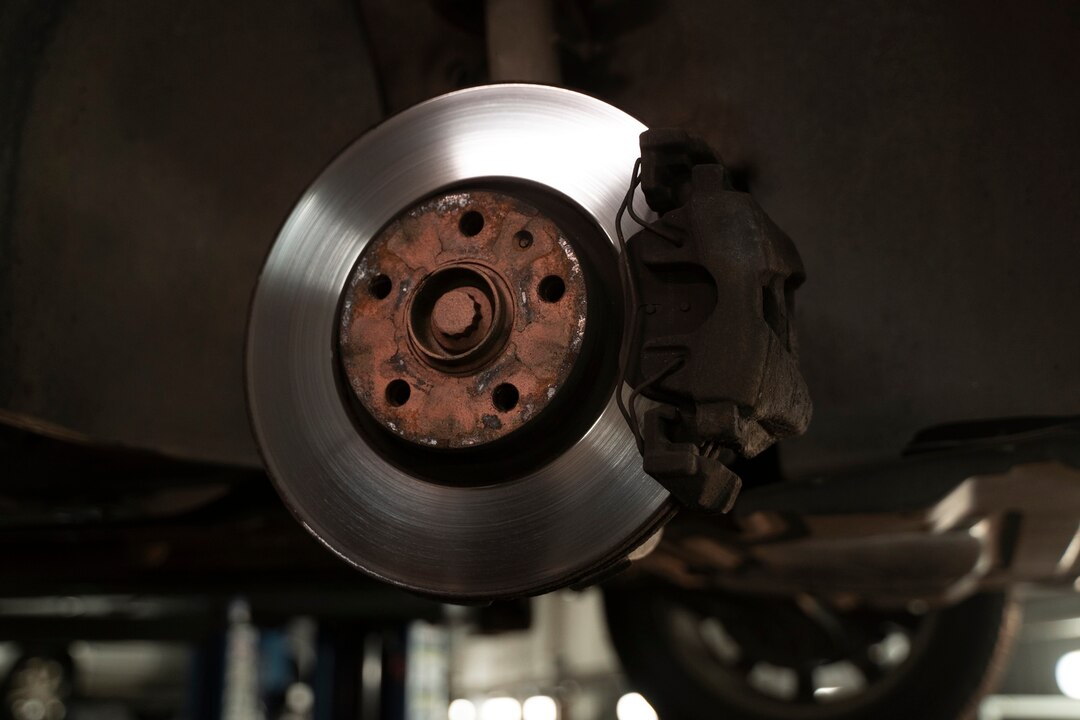Your car’s brake system is crucial for your safety on the road, and one of its key components is the brake pads. Brake pads are designed to grip the brake rotors and create the friction necessary to slow down or stop your vehicle. Over time, brake pads wear down and require replacement to maintain optimal braking performance. Recognizing the signs of worn brake pads can help prevent brake failure and ensure your safety while driving. Here are 10 signs that your car’s brake pads may need replacement:
- Squealing or Grinding Noise: One of the most common signs of worn brake pads is a squealing or grinding noise when you apply the brakes. This noise is caused by metal-to-metal contact between the brake pad and rotor, indicating that the brake pads are worn down and need to be replaced.
- Reduced Brake Response: If you notice that your car’s brakes feel less responsive or require more effort to stop the vehicle, it could be a sign of worn brake pads. As brake pads wear down, they become less effective at generating friction, resulting in reduced braking power.
- Vibration or Pulsation: Another sign of worn brake pads is vibration or pulsation felt through the brake pedal when you apply the brakes. This vibration occurs when the brake pads are unevenly worn or when the brake rotors are warped, causing the brake system to operate less smoothly.
- Thin Brake Pads: You can visually inspect your car’s brake pads to determine their condition. If the brake pads appear thin, worn down, or have less than 1/4 inch of material remaining, they are likely due for replacement.
- Dashboard Warning Light: Many modern vehicles are equipped with brake pad wear sensors that trigger a dashboard warning light when the brake pads are worn down. If you see a brake warning light illuminated on your dashboard, it’s essential to have your brake pads inspected and replaced as needed.
- Burning Smell: A burning smell while driving or after coming to a stop can indicate overheated or worn brake pads. This smell is caused by friction between the brake pads and rotors, which can generate excessive heat when the brake pads are worn down.
- Uneven Brake Pad Wear: Inspect your car’s brake pads for signs of uneven wear, such as one pad wearing down faster than the others or one side of the pad wearing more than the other side. Uneven brake pad wear can indicate issues with the brake calipers or brake system alignment.
- Visible Damage: Look for signs of visible damage to your car’s brake pads, such as cracks, chips, or missing chunks of material. Damaged brake pads can compromise braking performance and should be replaced promptly.
- Longer Stopping Distances: If you notice that your car’s stopping distances have increased, it could be a sign of worn brake pads. Worn brake pads require more time and distance to slow down or stop the vehicle, which can compromise your safety on the road.
- Metallic Dust on Wheels: Excessive brake dust buildup on your car’s wheels can indicate worn brake pads. As brake pads wear down, they shed small metal particles that can accumulate on the wheels, leaving behind a dark, metallic residue.
If you experience any of these signs or symptoms of worn brake pads, it’s essential to have your car’s brake system inspected by a qualified mechanic. Neglecting worn brake pads can lead to further damage to the brake rotors, calipers, and other brake components, as well as increased risk of brake failure and accidents. By addressing worn brake pads promptly, you can ensure your safety on the road and maintain optimal braking performance for your vehicle.











